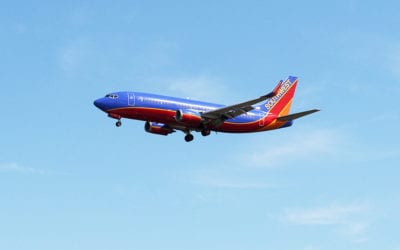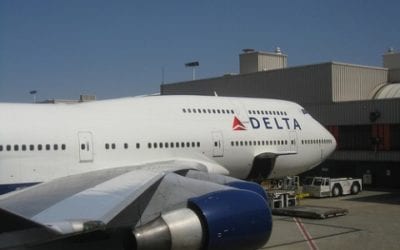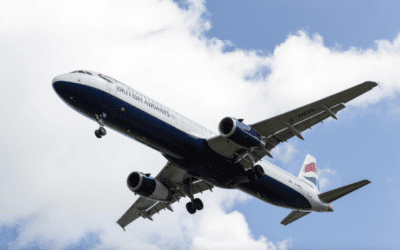The hearts of all who care about passenger trains are heavy with the losses suffered in last week’s tragic derailment of Amtrak Northeast Regional train 188 in Philadelphia. I am very thankful that neither I, nor any of my family or friends, were aboard train 188, and my thoughts are with the families of those who perished and suffered injuries.
It is worth noting that the number of railroad passenger and crew casualties, while there is no good excuse for any of them, pales in comparison to the daily carnage witnessed in accidents on our country’s roads. Passenger trains remain a safe mode of travel, and can be made even safer — as well as more available and convenient to more Americans as an alternative to driving.
There are a number of physical and technical upgrades that should be made to enhancing safety. Like all transportation infrastructure, these cost money. Thus, it is up to us traveler advocates to make the case to our elected officials that these investments are critical to allow safe travel in our country by whatever mode or combination of modes we choose.
Congress is currently debating bills to reauthorize passenger rail programs and set passenger rail policy for the next five or more years, as well as annual funding (known on Capitol Hill as appropriations) for transportation programs for fiscal year 2016 (which begins on Oct. 1, 2015).
The House has adopted its version of the reauthorization bill, dubbed the Passenger Rail Reform and Investment Act (PRRIA), and the Senate is beginning work on its version, which is likely to be introduced this week by Sens. Roger Wicker (R-MS) and Cory Booker (D-NJ). The House bill is a mixed bag of provisions, some of which are train traveler-friendly and some not so much. The Senate bill, from preliminary reports I’ve seen so far, looks to be better for passengers, and may incentivize some much-needed expansion of our skeletal national network of passenger trains. The media attention in the wake of last week’s derailment may drive faster action on these bills.
On the appropriations side, the full House Appropriations Committee on Wednesday adopted a fiscal 2016 bill that funds Amtrak at $1.14 billion ($288.5 million for operations and $850 million for capital, including $160.2 million for debt service and $50 million to bring facilities into compliance with the Americans with Disabilities Act). This is $260 million less than the $1.4 billion the railroad got this fiscal year, which is what it says it needs to keep the Northeast Corridor in good repair and maintain current levels of service around the country. The National Association of Railroad Passengers, another consumer advocacy group, says that at least $8.5 billion per year is needed to put passenger trains on closer to equal footing with highways and aviation. This amount is still short of the amounts called for in 2007 by a bipartisan commission on surface transportation created by the George W. Bush Administration. The next stop for this bill is the House floor. The Senate has yet to act on its fiscal 2016 transportation spending bill.
Thanks to the 2008 authorization law, all operating support (the amount needed to cover the difference between operating costs and passenger revenues) for train routes of 750 miles or less, outside of the Boston-Washington corridor, comes from the state(s) that those routes serve. Luckily, all the affected states have come up with enough funding to keep these routes operating without cutting service. And since the Northeast Corridor services more than cover their operating costs with passenger revenues (though revenues don’t nearly cover the capital costs of maintaining the Boston-Washington tracks that Amtrak owns all but 57 miles of), the entirety of the federal operating support goes to the fifteen long-distance routes of over 750 miles, which provide an essential alternative to flying and connectivity to small towns and rural communities that lack affordable air or intercity bus service.
In general, here are three of the many policy changes I believe would help make passenger trains a safe, reliable and enjoyable travel choice for more Americans:
• Sufficient funding to help railroads install an automatic train control system within a reasonable timeframe. It has been made clear, at least preliminarily, that last week’s derailment would have been prevented if some type of speed enforcement technology had been in place on the section of the Northeast Corridor (NEC) where it occurred. Such a system would have taken over and applied the brakes when the engineer began to accelerate heading into the curve. This technology has existed in some form since the 1920s. A number of hurdles have prevented its deployment throughout the US railroad network, including cost, time, and the availability of the over-the-air broadcasting spectrum that these communications systems require. A 2008 law requires railroads to install Positive Train Control (PTC), a system that enforces speed restrictions and signals and much more, by the end of this year. PTC might have been in place over the entire NEC by now, had Amtrak not encountered a number of legal obstacles to acquiring the necessary spectrum or faced difficulties funding the project from its perennially inadequate budget. There are other less expensive types of automatic train control systems that would still save lives, and the federal government should work with the railroads to find the most cost-effective way to put this technology into place expediently, and provide funds to assist in this effort — the current PTC requirement is an unfunded mandate.
• Competitive grants or low-interest loans to allow states and passenger railroads to purchase new railcars and locomotives on a large scale. There are not enough locomotives and railcars in active service to meet even existing demand for train travel, much less the increased demand we will see in the future. This shortfall comes as other options become more expensive and a new generation of Americans opts for a less car-dependent lifestyle. There is not a robust domestic passenger rail equipment manufacturing industry because there is not a sufficient volume of orders to make it worth the investments. The average age of Amtrak’s passenger cars is more than 25 years, and Amtrak is only now beginning to replace its oldest equipment, which dates back to the 1960s. Only by providing a reasonable amount of service so that trains fit more travelers’ schedules will trains attract much higher passenger volumes, and acquiring the necessary equipment is the first step towards making such robust service levels possible.
• An affordable national liability insurance pool for passenger train operators. One of the biggest hurdles to starting up any new passenger train service — be it a five-mile scenic excursion run by a small short line, a new commuter corridor, or a cross-country train run by either Amtrak or a private company — is purchasing sufficient insurance against liability for passenger and bystander fatalities and injuries. While there is a federal cap on damages in passenger train accidents, insurance coverage for states and host railroads adds significantly to the cost of operating passenger trains. Congress should establish (or facilitate the private sector establishing) a national insurance pool into which any state or train operator could buy, to lower the premiums for all participating operators. This would also make it easier for private companies to offer new services either in addition to, or in competition with, Amtrak. Such an insurance pool would benefit travelers.
Americans deserve to have a safe, reliable option of train travel. In other countries, travelers benefit from this choice because investing funds and political capital into passenger rail is not a matter of controversy amongst their elected officials. I only wish I could say the same for the USA.

I am a writer, researcher, multimedia communications professional, and photo/videographer.
I am focused on achieving sustainable economic development and human-scaled communities through a robust multi-modal transportation system centered around a network of high-performance local, regional, and inter-regional passenger trains and frequent and reliable rail transit (streetcars, light rail, commuter rail and subways/metros).



